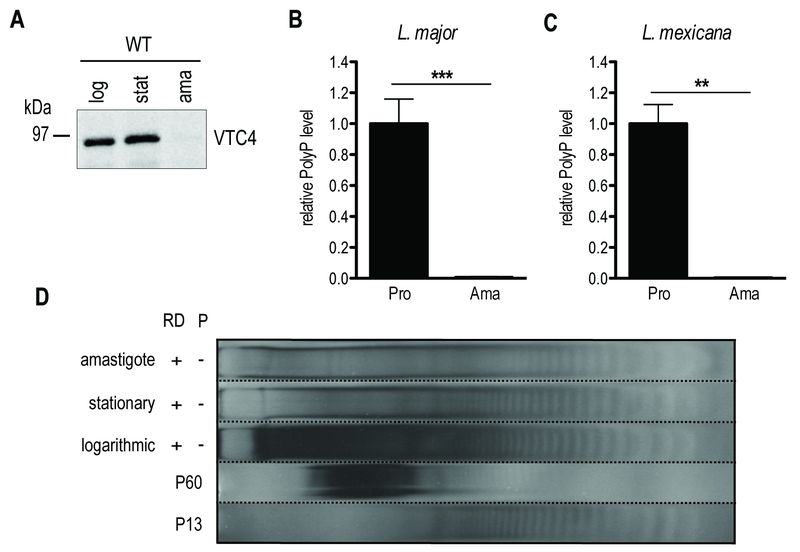Back to article: Importance of polyphosphate in the Leishmania life cycle
FIGURE 6: VTC4 and polyP levels at different life cycle stages of L. major and L. mexicana. (A) VTC4 abundance in 20 µg of pellet protein at different L. major life cycle stages, detected by cd-LmjVTC4 antibody. (B and C) Relative polyP quantification in L. major and L. mexicana promastigotes and amastigotes, by staining Pi residues after polyP digestion. Results of a pool of 2 independent experiments were expressed as mean ± SD. Statistical significance was assessed by Student’s t-test (B and C); ** p < 0.01, *** p < 0.001. (D) PolyP gel displaying polyP abundance in 6 x 107 logarithmic and stationary promastigotes as well as macrophage isolated L. major amastigotes. Chains were separated by electrophoresis on a 35% polyacrylamide gel and visualized by negative DAPI staining. log, logarithmic; stat, stationary; ama, amastigotes; pro, promastigotes; RD, RNase/DNase; P, Polyphosphatase. PolyP standards represent an average of the respective sizes ranging from 13 up to 60 residues (P13 and P60).

